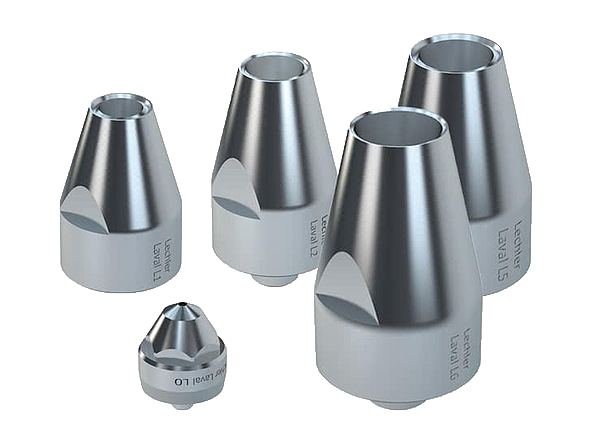Gas Conditioning Methods for Improving Cooling Performance and Reducing Emissions.

Gas cooling of hot flue gases must be precise for safe and efficient operation of downstream plant components in cement/lime and waste incineration plants. Plants are continuously searching for methods and processes that capture the heat and reuse it to improve the efficiency and reduce fuel costs. Lechler offers gas cooling for various applications that can be customized to a customer’s specific process.
Learn From the Experts at Lechler

Let’s learn from the expert, Rob VanDurme, who has worked at Lechler for over 25 years in Sales and Engineering. Rob has worked with numerous cement plants improving the cooling performance of gas conditioning towers and downcomer ducts to reduce plant emissions. Based on Rob’s knowledge and years of experience, let’s discover what can be achieved for evaporative cooling.
Evaporative Cooling in the Cement Making Process
Written by Rob VanDurme, Regional Sales Manager, P.E., M.B.A
Cement plants continually search for methods and processes to capture the heat and re-use it to improve the efficiency and reduce fuel costs. In most cement plants, the flue gas requires to be cooled to a temperature that is within specification of the particulate control device in order not to ignite the filter media that is being utilized to clean the flue gas of dust and contaminants. The flue gas enters a downcomer or Gas Cooling Tower where water is injected for cooling of the flue gas. The downcomer or GCT is typically located downstream of the kiln outlet and just upstream of the particulate control device to help control the temperature of the flue gas. In this area, the water droplets are heated until they reach boiling and they evaporate. The energy that is used to bring the water droplets to evaporation is removed from the flue gas and the resulting effect is a reduction in the flue gas temperature and increase in water vapor. This is known as the Heat of Vaporization. Imbalances in this process can produce wetting inside the duct or downstream equipment resulting in costly downtime and clean-up of the wet dust.
Twin Fluid Atomization Technologies

The two most common atomization technologies utilized in the evaporative cooling process are high-pressure atomization and twin-fluid atomization. High-pressure atomization uses elevated pump discharge pressures in the range of 500-600 psig to supply a spray injection nozzle/lance to introduce the water droplets into the flue gas. Twin fluid technology utilizes compressed air to atomize the water into droplets via a spray injection nozzle/lance as well. The water and compressed air (the two fluids) combine inside the nozzle and exit into the flue gas stream. The typical operating pressure of these systems is 60-80 psig.
Summary
Both technologies are used worldwide. Most installations in the United States utilize the twin-fluid technology. The merits of these systems in comparison to high-pressure atomization is that they produce smaller droplets at lower operating pressures. This allows for shorter evaporation distances and smaller construction costs in fabrication of a cement plant. The drawbacks to this system is that they require a constant supply of compressed air capacity that adds to the operating and maintenance costs of a cement plant.